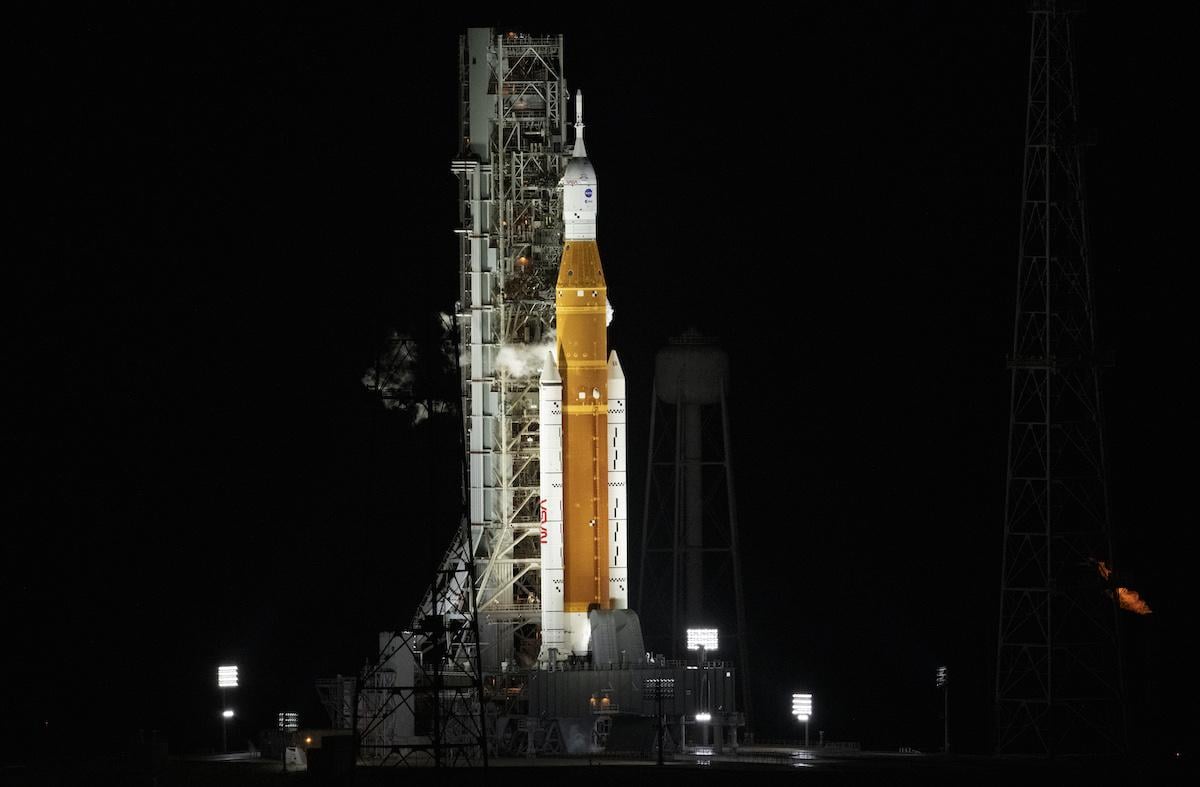
CAPE CANAVERAL—Confident an engine-cooling process is working as designed, NASA is pressing ahead with a second attempt to launch its inaugural Space Launch System (SLS) rocket on the Artemis I flight test.
“We have convinced ourselves without a shadow of a doubt that we have good quality liquid hydrogen going through the engines,” SLS Program Manager John Honeycutt told reporters following a NASA Mission Managers Team meeting Sept. 1.
After reviewing data gathered during the first SLS launch attempt on Aug. 29, NASA is confident it has addressed the technical issues that forced a scrub and has reset liftoff for Sept. 3 from Kennedy Space Center Launch Complex 39B. The two-hour launch window opens at 2:17 p.m.
Several issues converged in the final hours of the countdown on Aug. 29, which had been aiming for a launch at 8:33 a.m. EDT. Chief among them was a sensor reading indicating one of the SLS’ four RS-25 main engines was not reaching the proper temperature of -420F via a liquid hydrogen bleed line.
However, NASA is now convinced the procedure to bleed off liquid hydrogen and circulate it through the engines, thermally conditioning them ahead of launch, worked as planned.
“We know we had a bad sensor,” Honeycutt said. “That was our challenge [during the first countdown] where we could not make the physics of the system line up with what we were seeing with that one sensor. Since then, we’ve had time to go back and look at the data, compare many sources of data and do some independent analysis that confirm it’s a bad sensor.”
During the next launch attempt, engineers plan to begin the process of loading cryogenic liquid oxygen and liquid hydrogen into the SLS earlier, giving the propellant more time to thermally condition the Aerojet Rocketdyne RS-25 engines.
Technicians also addressed an unrelated hydrogen leak in the tail service mast umbilical near where the base of the 322-ft. rocket connects to the mobile launch platform. They replaced a flex-hose and a loose pressure sensor line and tightened bolts surrounding a purge can enclosure.
Mission managers also discussed an area of cracked foam on the SLS core stage intertank flange, which poses a very slight chance that a piece could break off during ascent and impact a motor used to separate one of the solid rocket boosters about 2 min. after liftoff.
“It’s a low likelihood of occurrence, but it is something that we considered an acceptable risk,” said Artemis I Mission Manager Mike Sarafin.
Meteorologists forecast a 60% chance conditions would be acceptable for a launch on Sept. 3.
The purpose of the Artemis I flight test is to send an uncrewed Orion spacecraft into a distant lunar orbit for a shakedown cruise before astronauts are launched during a follow-on flight test in about two years. NASA is aiming to land astronauts on the surface of the Moon with the third SLS launch.





